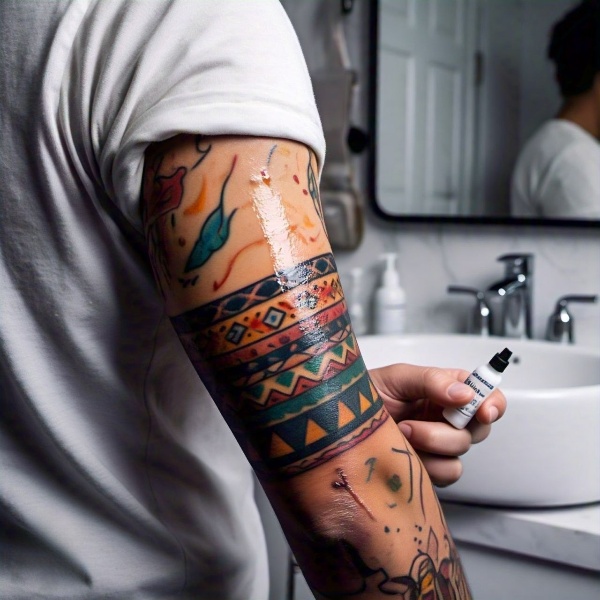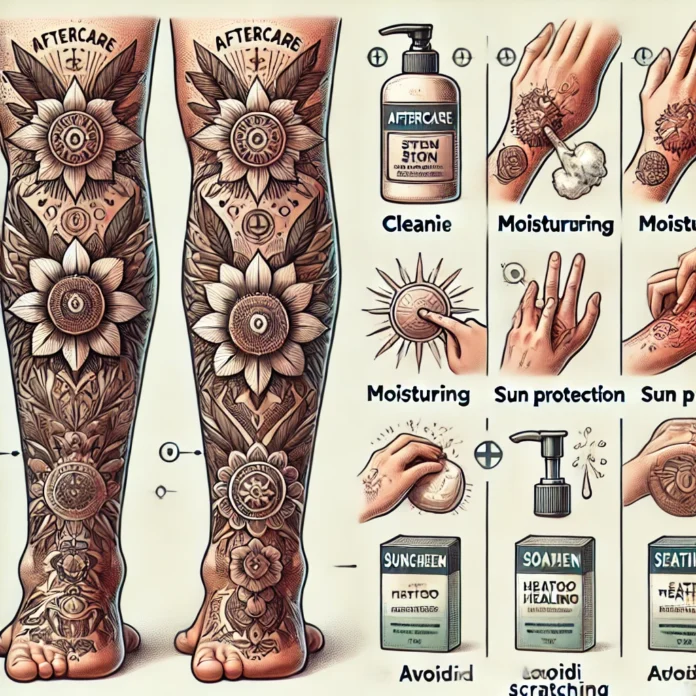Getting a tattoo is an exciting journey, but understanding the tattoo healing process is just as important as choosing the design. While your tattoo may appear healed after just a few days, the truth is, it can actually take up to 6 months for it to fully heal beneath the surface. The stages of healing vary depending on the types of tattoos, as some areas of the body take longer to heal. For instance, a finger tattoo will react differently than one on the forearm due to factors such as placement and how it affects the skin. Staying consistent with aftercare practices is the best way to ensure your tattoo stays clean and healthy throughout this process.
As someone with a collection of tattoos, I can tell you that once you’ve experienced the journey, you’ll already know the drill. However, if you’re stepping into the world of ink for the first time, it’s essential to understand the steps before your appointment. Improper care can be frustrating, turning your tattoo dreams into a nightmare of infections, excess itchiness, pain, or even inflammation.
Plus, experiencing temporary side effects like bleeding, swelling, or redness can feel scary if you aren’t expecting them. Each tattoo’s healing process is unique, and ensuring your aftercare is tailored to your specific tattoo and skin type will help it reach peak condition without complications.
Read More About First 48 Hours Aftercare Guide
4 Best Tattoo Healing Stages
Getting a tattoo is an exciting experience, but proper tattoo healing is essential to ensure your tattoo looks its best. Understanding the healing stages helps you care for your new ink effectively. Here are the four key stages of tattoo healing and tips to get through each one smoothly.
Stage 1: The Fresh Wound (Days 1-3)
What Happens:
- Right after getting tattooed, the area will feel sore, swollen, and red.
- Plasma, blood, and excess ink may leak from the tattooed skin.
How to Care:
- Wash your hands before touching your tattoo.
- Gently clean the area with mild, fragrance-free soap and lukewarm water.
- Pat it dry with a clean towel and apply a thin layer of recommended ointment.
Key Tip: Avoid over-washing or applying too much ointment, as this can trap bacteria or delay healing.
Stage 2: Scabbing and Itching (Days 4-14)
What Happens:
- Scabs begin to form as your skin starts healing.
- The area may feel tight and itchy.
How to Care:
- Resist the urge to scratch or pick at the scabs to prevent scarring.
- Continue washing and moisturizing your tattoo with a tattoo-specific lotion.
- Wear loose, breathable clothing to avoid irritation.
Key Tip: Keeping your tattoo hydrated is crucial to reduce itching.
Stage 3: Peeling and Flaking (Days 15-30)
What Happens:
- Dead skin cells start peeling off, revealing the healed layers underneath.
- The tattoo may look dull during this phase.
How to Care:
- Let the peeling happen naturally—don’t force it!
- Moisturize regularly to aid the shedding process.
- Avoid prolonged sun exposure, as it can damage the healing skin.
Key Tip: Use a high-SPF sunscreen once your tattoo is healed to protect it from fading.
Stage 4: Full Tattoo Healing (Days 30 and Beyond)
What Happens:
- The outer layers of skin heal, and the tattoo’s true colors begin to show.
- Deeper layers of the skin may take up to 6 months to fully recover.
How to Care:
- Keep moisturizing your tattoo daily to maintain its vibrancy.
- Avoid tanning beds and harsh skincare products in the area.
- Stay hydrated and maintain a healthy lifestyle to support skin health.
Key Tip: Schedule touch-ups with your tattoo artist if you notice any fading or unevenness.

How Long Does the Tattoo Healing Process Take?
In most cases, a tattoo begins to take its final form about a month after being inked, especially for young, healthy individuals. However, the tattoo healing process isn’t complete until around three months. Certain factors can influence how long it takes for a tattoo to fully heal. For instance, designs with more saturated areas of colour tend to require more needle pricks to deposit the ink, which can lead to a stronger inflammatory response and a longer recovery phase. As Macharia explains, this extra work on the skin creates more stress compared to finer, less saturated tattoos, impacting the overall timeline for tattoo healing.
Tattoo Healing Tips and Aftercare
Proper aftercare is crucial to prevent infection and ensure your tattoo heals correctly.
Clean and Protect Your Tattoo
Proper aftercare is crucial for keeping your tattoo clean and avoiding infection. Always use a fragrance-free, hypoallergenic soap to wash it gently. If you’re in an area where the water quality isn’t safe to drink, opt for distilled water or boil your water and allow it to cool before cleaning your tattoo. Once washed, make sure the tattoo is completely dry before applying a suitable moisturizer to protect and nourish the healing skin.
Moisturize and Soothe
Your tattoo artist may recommend a thick ointment for the first few days, but after that, switching to a lighter, gentle moisturizer like Lubriderm or Eucain can help manage itching. Some prefer pure coconut oil, known for its antimicrobial properties, but be sure to avoid any products with fragrance, as they can irritate the tattoo healing skin.
Shield Your Tattoo from the Sun
During the first few months, protect your tattoo by keeping it covered with sunscreen or sun-protective clothing. Direct sunlight can cause the ink to fade, and unfortunately, this damage cannot be reversed.
Avoid Scratching Your Tattoo
As your tattoo heals, it may scab over and itch, but resist the urge to scratch or pick at the scabs. Doing so could alter the tattoo’s appearance or lead to scarring. Applying a gentle moisturizer can help soothe the itching.

Keep It Hydrated
Drinking plenty of water is often overlooked but essential for the healing process. Staying hydrated helps your skin repair itself and keeps the area around your tattoo supply, reducing the risk of excessive itchiness or dryness during the recovery phase.
Avoid Tight Clothing
Wear loose-fitting clothing over your tattoo to prevent irritation and friction. Tight clothes can rub against the healing skin, leading to discomfort or even scabbing issues, which could affect the tattoo’s final condition.
Conclusion
The tattoo healing process requires patience and proper care to ensure your ink looks its best in the long run. Remember to stay consistent with aftercare, avoid scratching or irritating the area, and protect it from the sun. Your tattoo may take time to heal fully, but following these steps will help it reach its peak condition without complications. Don’t forget, every tattoo is unique, so adapt your care routine to the specifics of your design and skin to achieve the best results!
FAQs
1. How long does it take for a tattoo to fully heal?
A tattoo typically takes about 3 months to heal fully, but the skin may start looking healed after just 1 month. The tattoo healing process can vary depending on the tattoo’s size, color, placement, and how well you follow aftercare instructions.
2. Can I go swimming with a new tattoo?
It’s best to avoid swimming in pools, lakes, or the ocean during the first few weeks after getting your tattoo. Submerging the tattoo in water can increase the risk of infection and affect the healing process.
3. Why does my tattoo itch during tattoo healing?
Itching is a normal part of the tattoo healing process as the skin repairs itself. Applying a moisturizer can help soothe the itch, but avoid scratching or picking at your tattoo, as it can cause scarring or damage the design.
